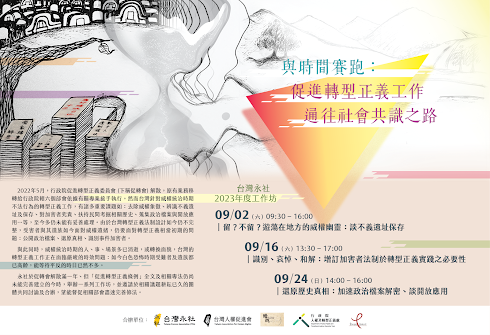Huang Di-ying 黃帝穎
(Huang Di-ying is a lawyer and director of Taiwan Forever Association)
(作者為律師、永社理事)
Translated by Zane Kheir
TAIPEI TIMES / Editorials 2015.05.09
http://www.taipeitimes.com/News/editorials/archives/2015/05/09/2003617828
While Chinese Nationalist Party (KMT) Chairman Eric Chu (朱立倫) was visiting China, President Ma Ying-jeou (馬英九) and KMT Vice Chairman Hau Lung-bin (郝龍斌) took a high-profile approach to provide a political definition of the so-called “1992 consensus.”
However, former president Lee Teng-hui (李登輝), who directed the 1992 cross-strait talks, emphasized that there is no such thing as the “1992 consensus” and denounced it as “a bunch of nonsense.”
The “1992 consensus,” a term former Chinese Nationalist Party (KMT) lawmaker Su Chi (蘇起) admitted making up in 2000 when he was head of the Mainland Affairs Council, refers to a tacit understanding between the KMT and the Chinese government that both sides of the Taiwan Strait acknowledge that there is “one China,” with each side having its own interpretation of what “China” means.
The Ma administration’s adherence to China’s imaginary “1992 consensus” — which sets the tone for a globally recognized “one China,” implying that it means the People’s Republic of China — does not only ignore historical facts, but is tantamount to the destruction of the Republic of China (ROC).
This year, for example, when Ma went to Singapore to pay his respects to former Singaporean prime minister Lee Kuan Yew (李光耀), China’s Ministry of Foreign Affairs and Taiwan Affairs Office immediately played on the “1992 consensus” and the “one China” principle, effectively turning Ma into a private traveler. Not only is the ROC invisible at international events, Ma can not even join a memorial service.
There are many examples of how the so-called “1992 consensus” is destroying the ROC internationally and seriously harming Taiwanese. In the 2013 Kuang Ta Hsing fishing boat case, when members of the Philippine Coast Guard opened fire, killing a Taiwanese fisherman, the Philippine government declined to apologize and provide compensation on the grounds of the “one China” principle.
At the Venice Film Festival in 2011, the Taiwanese movie Seediq Bale had its listed country of production changed to “Taiwan, China,” and the Ma administarion was unable to object to the change as it was constrained by the “1992 consensus.”
That same year, the Philippine government deported a Taiwanese suspect to China to stand trial, disrespecting Taiwan’s judicial sovereignty and human rights in the process. When the Ma government demanded an apology, the Philippine government firmly refused to issue one under the “one China” principle.
In 2010, the WHO recognized Taiwan as a province of China and rejected its request to join the World Health Assembly meeting as an observer; based on the “1992 consensus,” Ma had little choice but to bite the bullet.
In 2008, when addressing issues of compensation for the scandal over Chinese melamine-tainted milk powder, the Ma government signed the cross-strait food safety agreement with China based on the “1992 consensus.” However, Taiwanese were restricted by the “one China” principle and could not file transnational litigation. Even now, the claimants have nowhere to turn, and Taiwanese companies that suffered from the scandal have not received any compensation.
As Ma repeats China’s imaginary “1992 consensus,” he is pushing the “one China” framework on Taiwan and destroying the ROC internationally. Over the past seven years, this has caused tangible damage to Taiwan and its people. No wonder Lee Teng-hui sees it as “a bunch of nonsense.”


